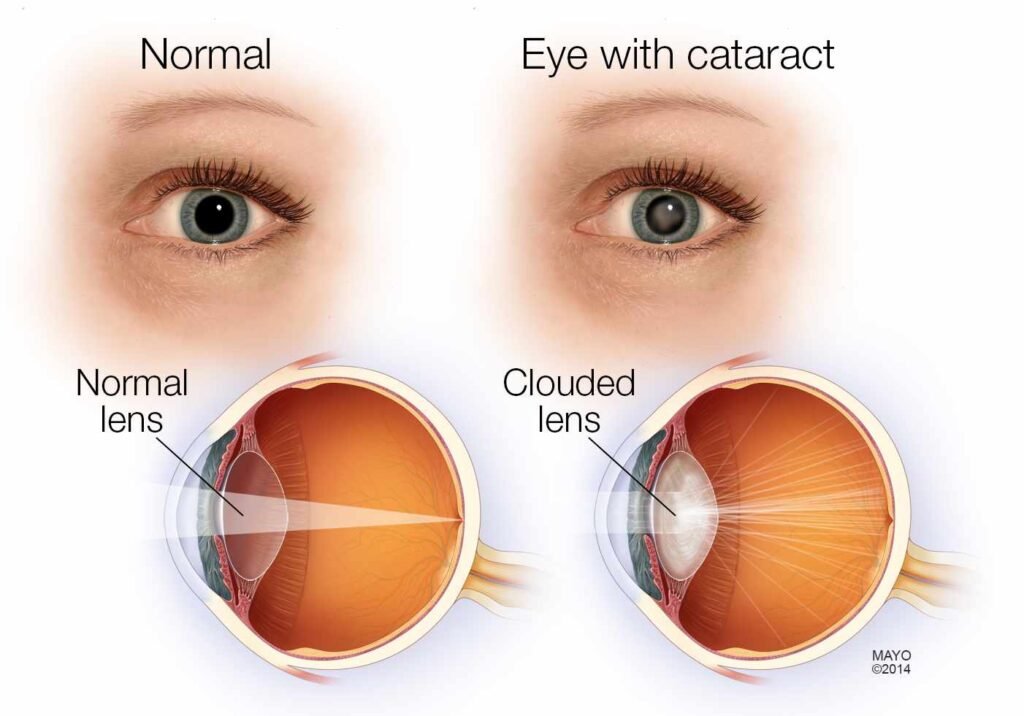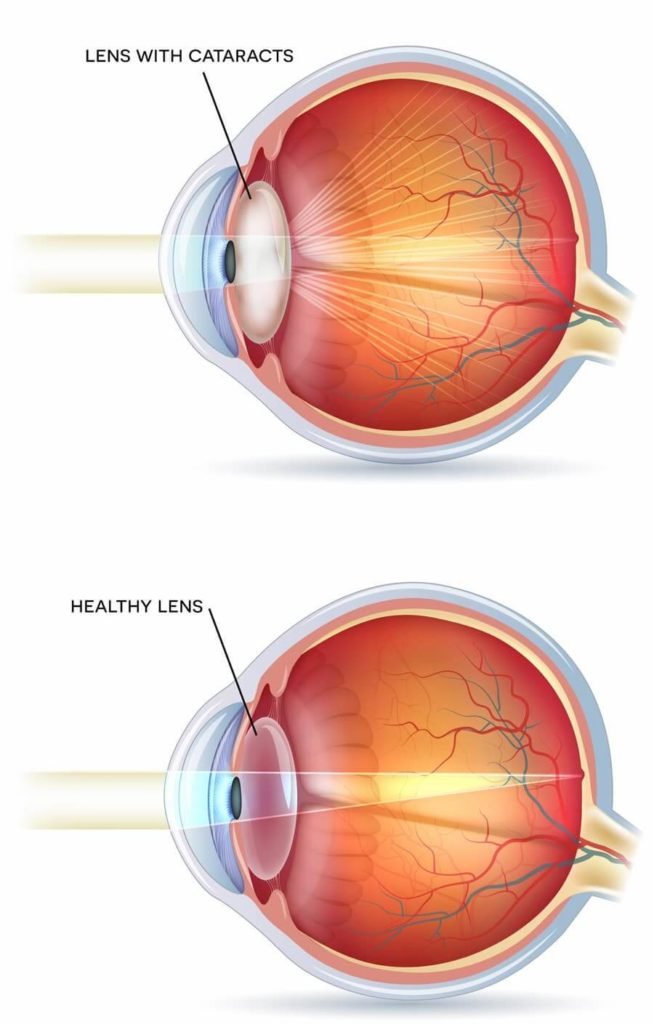Cataracts: Understanding Clouded Vision
What Are Cataracts?
A cataract is a clouding of the eyes natural lens, which lies behind the iris and the pupil. This clouding can lead to a decrease in vision and may eventually interfere with daily activities such as reading or driving. Cataracts are commonly associated with aging but can also result from other factors.
Causes and Risk Factors
Cataracts can develop due to:
● Aging: The most common cause; proteins in the lens break down over time.
● Trauma: An injury to the eye can lead to cataract formation.
● Exposure to Radiation: Including UV rays from sunlight.
● Medical Conditions: Such as diabetes.
● Medications: Long-term use of corticosteroids.
● Smoking and Alcohol Use: Both can increase the risk.


Symptoms
● Increased difficulty with vision at night
● Sensitivity to light and glare
● Need for brighter light for reading and other activities
● Seeing & halos & around lights
● Frequent changes in eyeglass or contact lens prescription
● Fading or yellowing of colors
Diagnosis
An eye care professional will perform a comprehensive eye examination,which may include:
● Visual Acuity Test: Measures how well you see at various distances.
● Slit-Lamp Examination: Allows the doctor to see the structures at the front of your eye under magnification.
● Retinal Exam: After dilating the pupils, the doctor examines the retina for signs of cataracts.
Treatment Options
● New Eyeglasses: Updating prescriptions to improve vision.
● Brighter Lighting: Using brighter lights for reading and other activities.
● Magnifying Lenses: For close-up work.
● Anti-Glare Sunglasses: To reduce sensitivity to light.Surgical Treatment
When cataracts interfere with daily activities, surgery is the most effective treatment. Cataract surgery involves removing the clouded lens and replacing it with a clear artificial lens (intraocular lens or IOL). The procedure is typically performed on an outpatient basis and is one of the most common and successful surgeries performed today.
At institutions like the Bascom Palmer Eye Institute and the Wilmer Eye Institute, advanced surgical techniques and technologies are employed to ensure optimal outcomes for patients undergoing cataract surgery.
Contact American care if you get these symptoms
● Sudden vision changes
● Double vision in one eye
● Sudden eye pain or inflammation
● Significant glare or halos around lights




